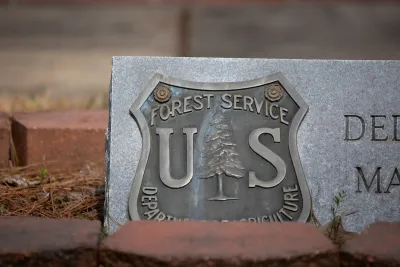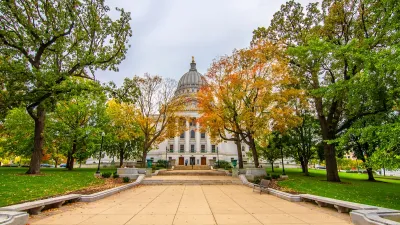U.S. Forest Service employees work on projects that have impacts far beyond remote, rural wilderness areas.

In an opinion piece in Greater Greater Washington, Lorenzo Cinalli and Kesha Braunskill, two former U.S. Forest Service employees, argue that the mass firing of USFS workers impacts all Americans, including those in urban areas. “Forest Service staffers work on innovative and applied research such as developing climate adaptation actions for use in local decision-making, like Climate Ready DC.”
The deep cuts to the Forest Service aren’t just a blow to the people who lost their paychecks—they’re a blow to the environmental resilience, economic stability, and overall quality of life of DC and urban communities across the country.
According to the authors, the Forest Service works on everything from fire prevention to urban forestry. “Nationwide, trees provide $104 billion dollars in benefits to residents from improved air quality, energy savings, and property values, with nearly $1 billion of those benefits in the DC alone. Trees provide flood mitigation, mental health benefits, critical habitat needed by our food systems, and far too many other benefits to list.”
Workforce reductions will likely reduce the resources allocated to tree planting initiatives (some grants were already revoked), harming urban tree canopies for decades to come, since “Urban trees planted today take years of care and maintenance to become mature canopy trees that provide shade, clean our air, and become valued parts of the community.”
FULL STORY: Forest Service layoffs could mean less resilient cities

Trump Administration Could Effectively End Housing Voucher Program
Federal officials are eyeing major cuts to the Section 8 program that helps millions of low-income households pay rent.

Planetizen Federal Action Tracker
A weekly monitor of how Trump’s orders and actions are impacting planners and planning in America.

Ken Jennings Launches Transit Web Series
The Jeopardy champ wants you to ride public transit.

California Invests Additional $5M in Electric School Buses
The state wants to electrify all of its school bus fleets by 2035.

Austin Launches $2M Homelessness Prevention Fund
A new grant program from the city’s Homeless Strategy Office will fund rental assistance and supportive services.

Alabama School Forestry Initiative Brings Trees to Schoolyards
Trees can improve physical and mental health for students and commnity members.
Urban Design for Planners 1: Software Tools
This six-course series explores essential urban design concepts using open source software and equips planners with the tools they need to participate fully in the urban design process.
Planning for Universal Design
Learn the tools for implementing Universal Design in planning regulations.
Ada County Highway District
Clanton & Associates, Inc.
Jessamine County Fiscal Court
Institute for Housing and Urban Development Studies (IHS)
City of Grandview
Harvard GSD Executive Education
Toledo-Lucas County Plan Commissions
Salt Lake City
NYU Wagner Graduate School of Public Service





























